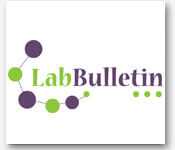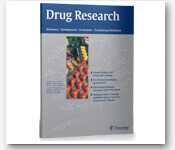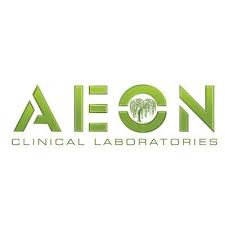Theme: Exploring the Tailored Strategies and Lucid Technologies in Toxicology and Pharmacology
Toxicology 2015
Track 1: Organ Systems Toxicity
The extent to which an organ system can be damaged by a toxicant is termed as Organ System Toxicity. It is dose dependent and species specific.
Certain chemicals interfere with the body’s endocrine system resulting in adverse developmental, reproductive, neurological and immune effects. Such chemicals are termed as Endocrine Disruptors. They interfere with both human and animal endocrine systems. Endocrine Disruptors are either natural or synthetic. They may also lead to carcinogenesis. They may be otherwise called as Endocrine Disrupting Chemicals or Endocrine Disrupting compounds or Hormonally Active agents.
Reproductive and Developmental Toxicology deals with the study of the hazards associated with some chemical substances, which interfere with normal reproduction. These substances adversely affect sexual functions and fertility of both adult males and females. They induce adverse effects on the foetus also. Teratogens are well known group of substances which are toxic for reproduction.
Track 2: Applied Toxicology
Toxicology is a branch of biology, chemistry, and medicine (more specifically pharmacology) concerned with the study of the adverse effects of chemicals on living organisms. It also studies the harmful effects of chemical, biological and physical agents in biological systems that establishes the extent of damage in living organisms. The relationship between dose and its effects on the exposed organism is of high significance in toxicology. Factors that influence chemical toxicity include the dosage (and whether it is acute or chronic); the route of exposure, the species, age, sex and environment.
Applied Toxicology uses scientific principles and procedures in conjunction with other scientific and technical disciplines to determine the physiological effect and the safety of the substances administered.
Various disciplines of applied toxicology includes: Forensic toxicology integrates toxicology and other sciences such as chemistry, pharmacology, physiology, clinical chemistry to investigate toxic substances, environmental chemicals or poisonous substances.
Applications include testing for illicit drugs or legal ones such as alcohol by taking blood samples.
Medical toxicology, deals with the treatment of acute or chronic poisoning, adverse drug reactions, overdoses and other chemical exposures.
Medical toxicology and clinical toxicology are closely related where in clinical toxicology involves non physicians as well.Clinical Toxicology Summit deals with all principal concepts of clinical toxicology
Veterinary toxicology is involved in the study of the effect of poisons on animals.
Analytical toxicology deals with the identification and measurement of foreign chemical substances on biological systems. Analytical toxicology can assist in the diagnosis, management, prognosis, and prevention of poisoning. Efficacy of treatment regimens can also be evaluated and compared using analytical toxicology concepts.
Nanomaterials are the substances with size ranging from 1-100 nanometres. They have large surface area to volume ratios. These properties make them unique when compared to their larger counterparts. Nanotoxicology is the study and application of toxicity of nanoparticles. It deals with the study of extent to which the properties of the nanomaterials influence the biological systems.
Track 3: Genetic Toxicology
Genetic toxicology deals with the study of effects of different physical, chemical and biological substances on genetic material. It identifies the possible reasons for occurrence of birth defects, heritable mutations and carcinogenesis.
Mutations are caused due to genetic damage. The property of the chemical agent which causes the genetic damage is studied under genotoxicity. Mutations are the main cause for carcinogenesis.
Mutagenesis occurs spontaneously in the nature which results in the change in genetic information of an organism in a stable manner. It may also occur due to mutagens.
Genotoxic chemotherapy induces DNA damage in the cancer cells thus leading to their death. It is done by using one or more genotoxic drugs. Damage done to a cancer is passed on to descendent cancer cells as proliferation continues. Apoptosis is induced under severe conditions.
Track 4: Toxicity Testing Market & Business Opportunities
Toxicity Testing Summit a part of Toxicology conference deals with various aspects like Animal testing for Toxicity, Alternatives to animal testing, Emerging in vitro models etc.
Animal testing for toxicity is a part of the non-clinical laboratory testing of pharmaceuticals. It is the best method to effectively predict the toxic effects of drugs on human beings. Many alternatives have evolved for animal testing now. Alternatives to animal testing includes Emerging in vitro models: These are based on human cell and tissue cultures computerized patient-drug databases and virtual drug trials computer models and simulations stem cell and genetic testing methods non-invasive imaging techniques such as MRIs and CT Scans micro dosing-a technique in which humans are given very low quantities of a drug to test the effects on the body on the cellular level, without affecting the whole body system). In vivo imaging is a process in which living animals are visualised. This technique is mainly intended for drug development. In vivo imaging helps in observing changes in the biological systems at different levels of organisation.
Measurement of toxicity and toxicants is done by assessing the effect of the toxic substance on the biological systems. Factors such as age, gender, body weight influence the response of bio systems to the same dose.Therefore various elements like Lethal dose (LD50), Fixed-dose procedure etc. are to be employed for the measurement of toxicity and these are dealt in detail at the Toxicology Conference
Track 5: Environmental Toxicology
Environmental toxicology is the study of the harmful effects of various chemical, biological and physical agents on living organisms at different levels of ecosystem. Many sources lead to environmental toxicity which includes toxicants from pollutants, insecticides, pesticides, fertilizers, industrial and metallic toxicants. All these agents have a profound influence on the living organisms. This may result in the imbalance of ecosystem.
Anthropogenic factors, manufactured chemicals etc. have a major impact on aquatic ecosystems. The first affected population due to the environmental pollutant burdens is the aquatic population. Aquatic toxicology studies the impact of these factors on the aquatic organisms at various levels of organisation and ecosystem.
Aquatic toxicology is a multidisciplinary field which integrates toxicology, aquatic ecology and aquatic chemistry.
The chemical substances which are used to kill, injure or incapacitate human beings with their toxic properties are called as Chemical Warfare Agents. These agents can be any state-solid, liquid, gas or volatile. These are inexpensive and relatively easy to manufacture.
The chemical warfare agents may be classified into Harassing agents, Incapacitating agents, Lethal agents, Blood agents, Choking agents, Nerve agents.
Track 6: Regulatory Toxicology
Regulatory toxicology predicts the extent to which a chemical substance can cause harm and then form regulations to minimise the risk.
Toxicokinetics deals with the study of the rate at which a chemical enters the body and what happens to it in the body. Toxicodynamics determines the number of receptors that can interact with the toxic agents. For better understanding and prediction of adverse health outcomes caused by xenobiotic Computational Toxicology develops mathematical and computer based models. Food Safety and Risk Analysis, Human Health and Environmental Risk Assessment are evaluated under Systems Toxicology
Track 7: Applied Pharmacology
Pharmacology deals with the study of drugs. In detail it deals with the properties of drugs, their action, interactions between drug molecules and their target sites, the mechanisms by which they elicit pharmacological action.
The discipline of pharmacology can be divided into many sub disciplines each with a specific focus, Clinical pharmacology being one among them. Clinical pharmacology deals with the study of clinical use of drugs and understanding new drug therapies. Applied Pharmacology can of use in the following areas:
- Help assess data obtained from clinical study
- In the better understanding of ADME Drug Transport Mechanism
- Drug interactionscan be explained better using the concepts of Applied Pharmacology.
- Provides explanation for different drugs having related pharmacological action.
- In the assessment of Drug Abuse and Addiction
Track 8: Biotoxins
Toxicology Summit deals with Biotoxins which are toxic substances which have a biological origin. In some organisms biotoxins have no advantages whereas in some such as the Toxic Plants they serve as means of predation or defence. Biotoxins vary in function, mechanism and form. They may be complex molecules or simple proteins. They come in many forms and can be produced by nearly every type of living organism.
There are: mycotoxins, produced by fungi. Neurotoxins mainly affect the nervous systems of animals. Organisms that possess neurotoxins include venomous animals like scorpions, box jellyfish, elapid snakes, cone snail, blue-ringed octopus, venomous fish. Cyanotoxins are the biotoxins produced by cyanobacteria.
Microbial Toxicity Summit is a key part of the Toxicology Summit dealing with different kinds of biotoxins
Track 9: Pharmacovigilance and Toxicologists Meetings
Pharmacovigilance , is the pharmacological science which deals with identifying, collecting, detecting, assessing, monitoring, and preventing adverse effects caused by pharmaceutical products. It mainly focuses on adverse drug reactionsor ADRs, which are unintended pharmacological responses. Adverse drugs reactions may be caused due to overdose misuse or abuse of drugs. Pharmacoviglilance departments go into an agreement with patients and health care providers to obtain data which forms their medical literature
Pharmacovigilance thus plays a crucial role in identifying the hazards associated with pharmaceuticals and also deals with minimising the risk of occurrence of adverse drug reactions.
In the Toxicologists Meetings a forum is provided where scientists, academia and other professionals cite their research works, exchange information and ideas and thus help in fostering Toxicology. Known and respected for its preeminent conferences, OMICS brings together leading experts from academia, business and government to address relevant toxicology topics with proceedings published as a, journal article compilation.
Market Analysis
TechNavio's analysts forecast the Global In Vitro Toxicity Testing market will grow at a CAGR of 15.84 percent over the period 2013-2018. Attributed to the support offered by the European government, the in vitro toxicology testing market in Europe was the largest in 2013 and is expected to hold the same stance by 2018. The global in-vitro toxicology testing market is estimated to reach $17,227 million by 2018 at a CAGR of 13.5% during the forecast period (2013–2018). The market will witness a double-digit growth attributed to the increasing acceptance of in vitro methods over in vivo ones. Government support to stop animal testing, new and promising technologies, and advancement in new approaches are significant factors propelling the market in the forecast period. On the other hand, predictive ability of in vitro testing and limitation of the methods to replicate true in vivo conditions are the factors that hinder the market. The government programs such as the TOX 21 initiated by the U.S. government and growing number of drug discoveries and innovations globally represent an opportunity for the growth of the market.
European Toxicology Conference-2015 deals with exploring new horizons in the field of Toxicology & Pharmacology in Europe.
Likewise Omics organises various conference series with an aim to make latest innovations and technologies Open Access.

Prof. Marcelo L. Larramendy, Ph.D.
Principal Researcher CONICET
Faculty of Natural Sciences and Museum
National University of La Plata
La Plata, Argentina
OMICS International is proud to host the 4th Global Summit on Toxicology during August 24-26, 2015 at Philadelphia, USA. The theme of Toxicology 2015 is ‘Exploring the Tailored Strategies and Lucid Technologies in Toxicology and Pharmacology’. Toxicology 2015 provides a unique opportunity for the participants with diverse backgrounds to share their research ideas and to learn from other colleagues about the newest scientific advancements in the field of toxicology and related disciplines. Toxicology 2015 is a venue where you can meet the world leading toxicologists, pharmacologists and other distinguished scholars who will broaden your scientific horizons.
Toxicology 2015 Summit offers a unique window and opportunities to present and evidence the latest updates with a holistic approach to different areas of interest. We have done our outmost to get rid of the traditional “silo” approach in the elaboration of the programme and most importantly, during the active sessions, in order to foster innovation and scientific curiosity. Thus, our intention is, to create platforms which will gather eminent scientists who will undoubtedly enrich our meeting during the Q&A sections.
We have tried to compile a scientific programme that we hope will be appealing to experienced, aspiring and young scientists. We have also not left aside other actors in the Industry.
The topics of the Conference will truly reflect the current trends, recent advances, new approaches and future trends in Toxicology, Pharmacology and Genotoxicology. The Summit will cover among others: Mechanisms and modes of action of various toxins, Genotoxicity and Mutagenicity, Clinical and Forensic toxicology, Omics technologies, Emerging in vitro models, Nanomaterials, Regulatory toxicology and last but not least, a broad scope of toxicology and pharmacology in different fields.
The organizers truly hope that your participation at the 4th Global Summit will encourage a creative networking atmosphere between Academia and Industry. If we are able to achieve this, even in a modest fashion, our expectations will be fulfilled.
All Welcome!
(Founding Member-Organizing Committee)
Toxicology 2015
Genotoxicity Workshop- From Laboratory Studies to Marketing Regulation
1. Genotoxicity. Basic aspects and most commonly worldwide employed and validated in vitro assays
Time Duration: 20 min
Speaker: Leon F. Stankowski, Jr., Ph.D.
Principal Scientist/Program Consultant, Genetic Toxicology
BioReliance. Rockville, MD 20850, U.S.A.
2. Genotoxicity. Basic aspects and most commonly worldwide employed and validated in vivo assays
Time Duration: 20 min
Speaker: Rohan Kulkarni, M.Sc., Ph.D.
Director, Genetic Toxicology
Study Management
BioReliance. Rockville, MD 20850, U.S.A.
3. Genotoxicity in non-traditional animal models
Time Duration: 20 min
Speaker: Marcelo L. Larramendy, M.Sc., Ph.D.
School of Natural Sciences and Museum,
National University of La Plata, Argentina
4. Genotoxicity and Industry. Basic and applied concepts. Can genotoxic tests guide pipeline development?
Time Duration: 20 min
Speaker: Daniel Roberts, Ph.D.
Associate Research Scientist
Bristol-Myers Squibb Company. Trento, NJ 08619, U.S.A.
5. Genotoxicity Regulation. Basic and applied concepts
Time Duration: 20 min
Speaker: Kathryn Guyton, Ph.D. (To be confirmed)
IARC, Lyon, France
To share your views and research, please click here to register for the Conference.
To Collaborate Scientific Professionals around the World
| Conference Date | August 24-26, 2015 | ||
| Sponsors & Exhibitors |
|
||
| Speaker Opportunity Closed | Day 1 | Day 2 | Day 3 |
| Poster Opportunity Closed | Click Here to View | ||
Useful Links
Special Issues
All accepted abstracts will be published in respective Our International Journals.
- Journal of Clinical Toxicology
- Journal of Drug Metabolism & Toxicology
- Journal of Environmental & Analytical Toxicology
Abstracts will be provided with Digital Object Identifier by


















